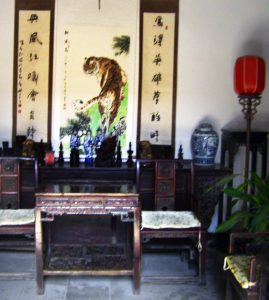SCIENCE: Chinese Innovations
Fire. Would we even be the humans we are today without it? Important for light, warmth, and heat for cooking our food.
A critical innovation in control over fire happened in China in 577 AD. The story concerning the invention of the first matches is that Northern Qi court ladies needed to start cooking and heating fires. Unable to gather tinder, due to enemy troops blockading their city, they used pine sticks coated with Sulphur. This allowed them to start a new fire from existing embers, thus, inventing the first matches.
These matches did not ignite by striking them. They needed a source of heat—another fire or embers. Nevertheless, it was a great leap forward. In fact, they were so essential that in 950 AD Tao Gu, a poet and official from the Song court, described the technique for these Sulphur coated pine sticks calling them “light-bringing slaves.” Later these early matches were commonly known as “fire-inch sticks.” Strikable matches were not invented for more than another 1,000 years–in 1805 by the French chemist Jean Chancel.
If you read or watch wuxia stories (martial arts fiction), you have probably seen/read about 火折子 huo zhe zi or fire sticks. They are something like today’s cigarette lighters. In these stories, characters carry fire sticks on their bodies, within their clothing. When they need a fire—to light a candle or give them light in the dark—they pull a fire stick out, blow on it, and a flame appears.
Basically, fire sticks are bamboo tubes stuffed with a rolled up flammable material, such as paper or cotton. The material is ignited, then partially extinguished, leaving glowing embers in the tube. Later, when needed, the embers are ignited by blowing on them. There’s a bamboo cap over the top, protecting the ember. The cap is not air tight, since it must allow for a bit of ventilation in order to keep the ember aglow. Otherwise, the ember would suffocate and the fire stick would be useless.
I could not find information indicating whether this intriguing invention was historically accurate or not. In fact, the only source I could find was the wonderful blog post https://wuxiawanderings.com/flame-stick/ Wuxia Wanderings (posted January 12, 2020). If you’re interested, I recommend you go read this post to learn more about it.
Do you know whether huo zhe zi (fire sticks or flame sticks) are historically accurate or are only a fascinating piece of fiction? If you do, please let me know in the comments section. I would love to use this device in a story, if it’s historically accurate.


